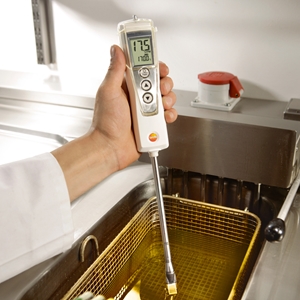The food industry is full of regulations and laws for a simple reason – if the quality of the product drops, then consumers could face a serious health risk.
It seems in recent years that food manufacturers are developing more and more new deep-fried products. From french fries to spring rolls, there is little that doesn’t go into a deep fryer these days.
With so much food being cooked in oil, it does pose a question about how often that oil should be changed and how to identify when the quality decreases.
How can cooking oil go off?
Cooking oil, like most ingredients, becomes rancid in a number of situations that can cause the quality of the cooking and the product to decrease.
Simply leaving the oil at room temperature will lead it to go off over time. The quality can also decrease because of how hot the fryer is set at and what type of food is being fried.
Scientifically, this is referred to as thermal oxidative modification. This is measured by looking at the number of polar components present – a high level indicates the oil has been used frequently.
How can industry avoid this situation?
Assessing the quality of cooking oil can be done on a judgement basis as most industry professionals can accurately tell when the quality begins to decrease. However, this can miss some important information that a tool can provide.
The testo 270 Cooking oil tester is a good example of an electronic hand-held instrument that food manufacturers can use on a daily basis. By simply dipping the tester into the oil, the amount of polar components is measured and displayed on the screen.
If the polar component amount increases past a certain level, an alarm is activated to alert manufactures to change the oil.
Also featured on the screen is the actual oil temperature, which is an important factor to measure to ensure food is cooked thoroughly.









 Reduce cooking oil costs while ensuring quality
Reduce cooking oil costs while ensuring quality Expert knowledge on CO2 monitoring
Expert knowledge on CO2 monitoring Refrigeration knowledge - in 3 modules
Refrigeration knowledge - in 3 modules



